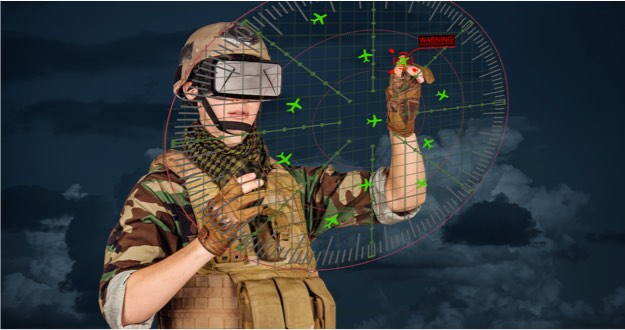It’s no secret that technology has changed the way wars are fought: unmanned aerial vehicles, laser-guided weapons, and military robotics are hallmarks of modern warfare. These advanced technologies, however, are only as good as the highly trained soldiers operating them. Fortunately, military training is also embracing technology, advancing far beyond the 500-page manuals and classroom instruction of the past. Indeed, some training technologies for today’s recruits evoke the futuristic sci-fi scenarios of Netflix’s popular series Black Mirror. Not only are these once far-fetched technologies currently in use; they are revolutionizing the way we train our military personnel and enabling a more realistic, safe, and effective training experience.
Up until 1992, U.S. Naval submariners practiced escaping from sinking vessels using the Submarine Escape Training Tank, immersing themselves in a 100-foot tower full of water. While submarine training has evolved to incorporate nuclear technologies and the changing landscape of naval warfare, recent advances in virtual reality (VR) training make former methods look outright primitive in comparison. For instance, defense contractor Booz Allen is working on an immersive training experience called OceanLens, which accurately maps the ocean floor for submarine captains-in-training. Rather than viewing a sample ocean floor generated by a graphic designer, submariners will be able to train in a topographically accurate setting that better prepares them for what they’ll face in actual underwater combat situations.
These virtual reality programs aren’t generating animated, cartoon-like environments; rather, the setting is so realistic that the majority of trainees using a VR flight simulator refused to step out of the “plane,” despite knowing they had stepped into a faux cockpit minutes earlier. And that realism is key in military training that, if conducted incorrectly, could cause significant harm or trauma to soldiers. Current parachute jumper simulations can create a real-time picture of a landing zone, but keep trainees’ feet on the ground until they are comfortable planning missions and taking jumps via virtual reality. In addition to heightened safety, this also translates into a higher pass rate on actual first-time parachute jumps.
New training technologies could also represent significant cost savings for the military. Artificial Intelligence (AI)—software that can learn with use—can adapt over the course of a training program to create new challenges for trainees, rather than requiring an update or replacement. As AI software adjusts to trainees’ skill levels, fighter pilots can learn to face increasingly skilled adversaries, and weapons mechanics can repair more complex malfunctions—all without investing in additional software.
Ultimately, the measure of any training method is its effectiveness. The tech-savvy, millennial-aged recruits entering today’s military are accustomed to virtual experiences and are particularly receptive to AI and VR training. Evidence is on their side: students undergoing virtual training consistently outperform those who are taught in a traditional lecture format. And, for those signing up to make lethal force decisions and risk their lives for their country, training in lifelike scenarios through AI and VR may be their best defense.

